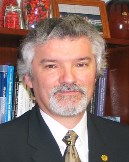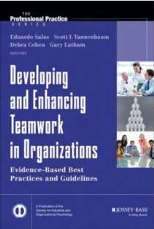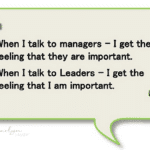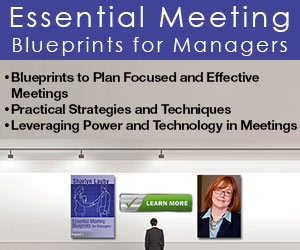We often talk about the importance of organizational teamwork. But rarely do we talk about making an investment into specific team training. Yes, there’s teambuilding but that’s something different.
During this year’s SHRM Annual Conference, I had the opportunity to hear a special session on teamwork, led by Dr. Eduardo Salas. He is the Trustee Chair and Pegasus Professor of Psychology at the University of Central Florida (UCF). I knew I would immediately like him since he was from my alma mater. ha.ha.
Dr. Salas received the 2012 Michael R. Losey Award from the Society for Human Resources Management for his contributions toward understanding teams, groups and training effectiveness. He just released a new book, “Developing and Enhancing Teamwork in Organizations: Evidence-Based Best Practices and Guidelines”. I was thrilled when Dr. Salas agreed to share his thoughts.
According to Dr. Salas, companies that provide team training can see as much as a 20% increase in team performance. This compares to activities like teambuilding, which are still important but do not have the same impact on team performance.
Dr. Salas, what started your interest in studying teams and team dynamics?

Can you share why “team training” is completely different from “team building”?
Team training is really about getting specific teamwork competencies – the knowledge, skills and attitudes needed to be a good team player and work well with others. It is a skill-based instructional strategy; it is usually context-specific as well. That is, you train in context or in simulations that mimic the work environment as much as possible.
Team building is usually about role clarification, goal setting or interpersonal relationships. This usually occurs out-of-context, as a retreat of sorts. Both have a place. Both can yield positive results, if designed appropriately.
During the SHRM Annual Conference, you shared the 7 C’s of Effective Teams: Cooperation, Coordination, Communication, Cognition, Conflict, Coaching and Conditions. Is there a most important characteristic? If so, which one and why?
To me it’s all about Conditions – the organization conditions put in place to promote, foster, and incentivize teamwork behavior. You can have the best team in the world. Well trained. But if the conditions are not optimal for teamwork, organizations don’t get the behavior, cognition or attitudes needed. I believe, optimal organization conditions are imperative for teamwork. It is all about what the leadership does to create those conditions.
Do the principles you’ve described apply equally to virtual teams? Are there special actions someone should take it they’re part of a virtual team?
For the most part, yes. But some are more important in this setting. Like getting the trust, more difficult in virtual teams.
What would you say is the biggest team killer?

Many thanks to Dr Salas for sharing his expertise. One quote that stuck with me from his session was “a team of experts does not make an expert team”. How very true. If we want our teams to function at a high level, we need to give them the tools to be effective. And those tools might be different from the training we provide to improve individual performance.







Jamie Lawrence says
Like the quote, “a team of experts does not make an expert team,” a lot. I think team development will become more important as our attitudes and expectations of leadership evolve. Professor Cliff Oswick from Cass Business School talks about ‘non-leadership,’ pretty much the art of stepping back and enabling employees to make business-critical decisions. These decisions will be made by close-knit teams (the marketing team, the HR team) rather than individual employees and the success of this movement will come down to whether these teams have the knowledge (“Do I know enough to make a decision that affects the business?”), the soft skills (“Can I communicate this viewpoint effectively?”) and – crucially – whether the team is able to function as a living, breathing, progressive unit. The seven Cs are clearly paramount, and non-leaders will need to focus on conditions if these teams are to help organisations become more progressive, efficient and social. Nice interview, thanks for sharing.
-Jamie Lawrence, Editor, HRZone.com
Sharlyn Lauby says
Thanks for the comment Jamie. I really like the idea of enabling employees to make decisions. I believe companies in the future will not have the levels of structure they did in the past. Employees will have to self-manage. While I agree with the concept, not sure I’m keen on the term “non-leadership”. I prefer to think that everyone is a leader. And instead of reserving leadership conversations and training for a select few, it should really be for everyone.
Clark says
I definitely agree that lack of clarity and lack of clearly defined responsibilities and boundaries is a big team killer.
I’ve been in a few situations like that, and luckily we were able to fix it before things got worse. It’s definitely not a hard fix, but it takes effort and recognition of the problem.